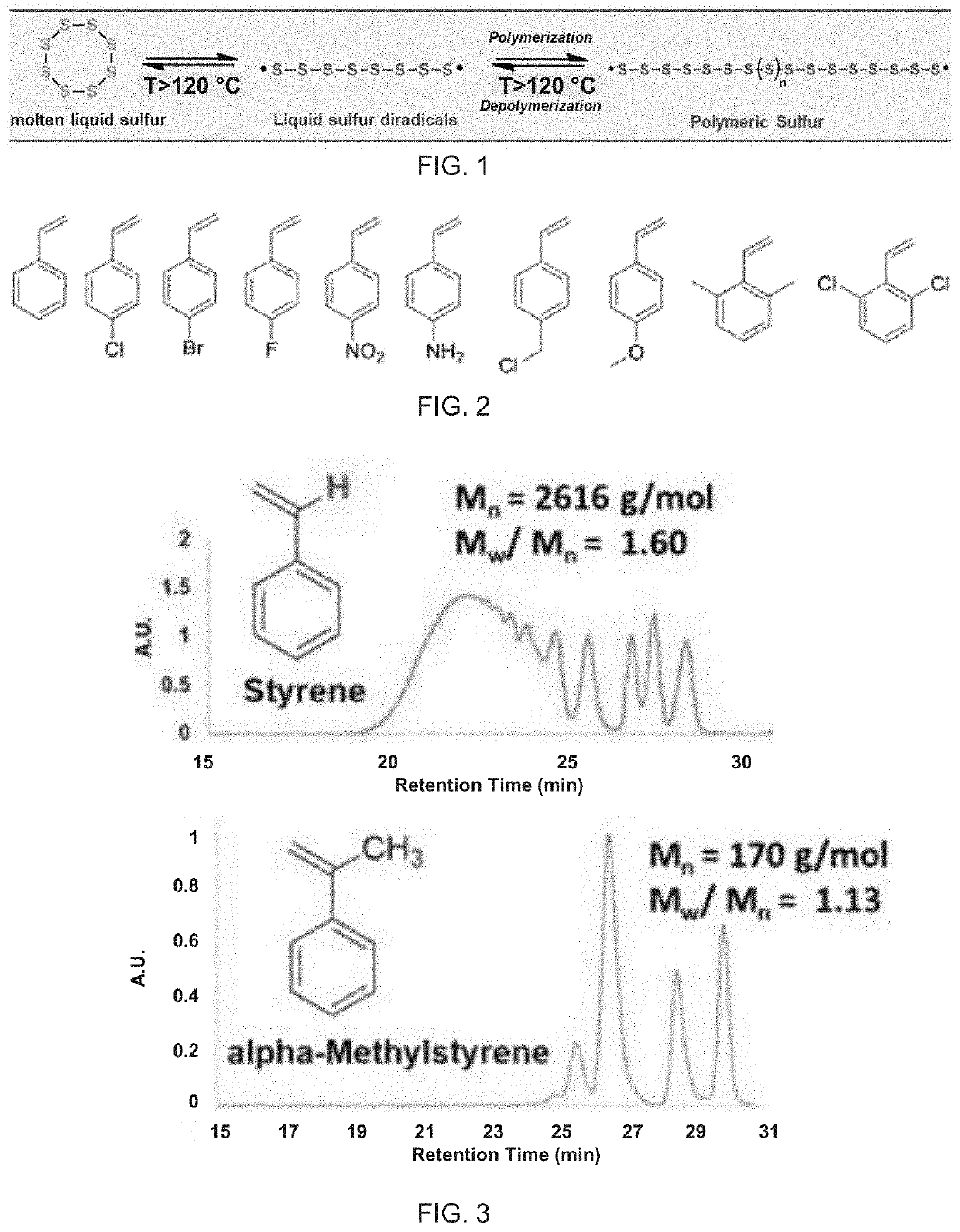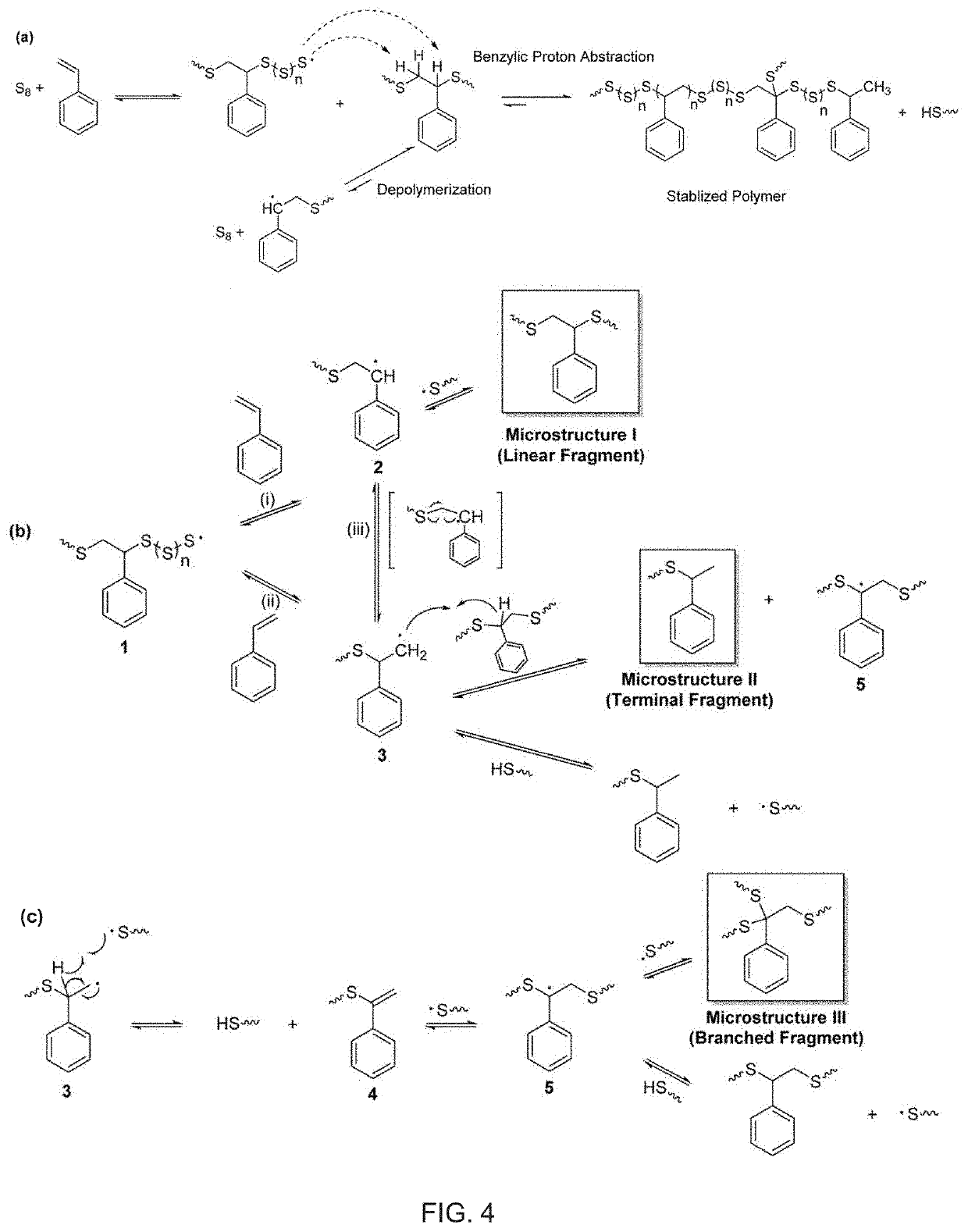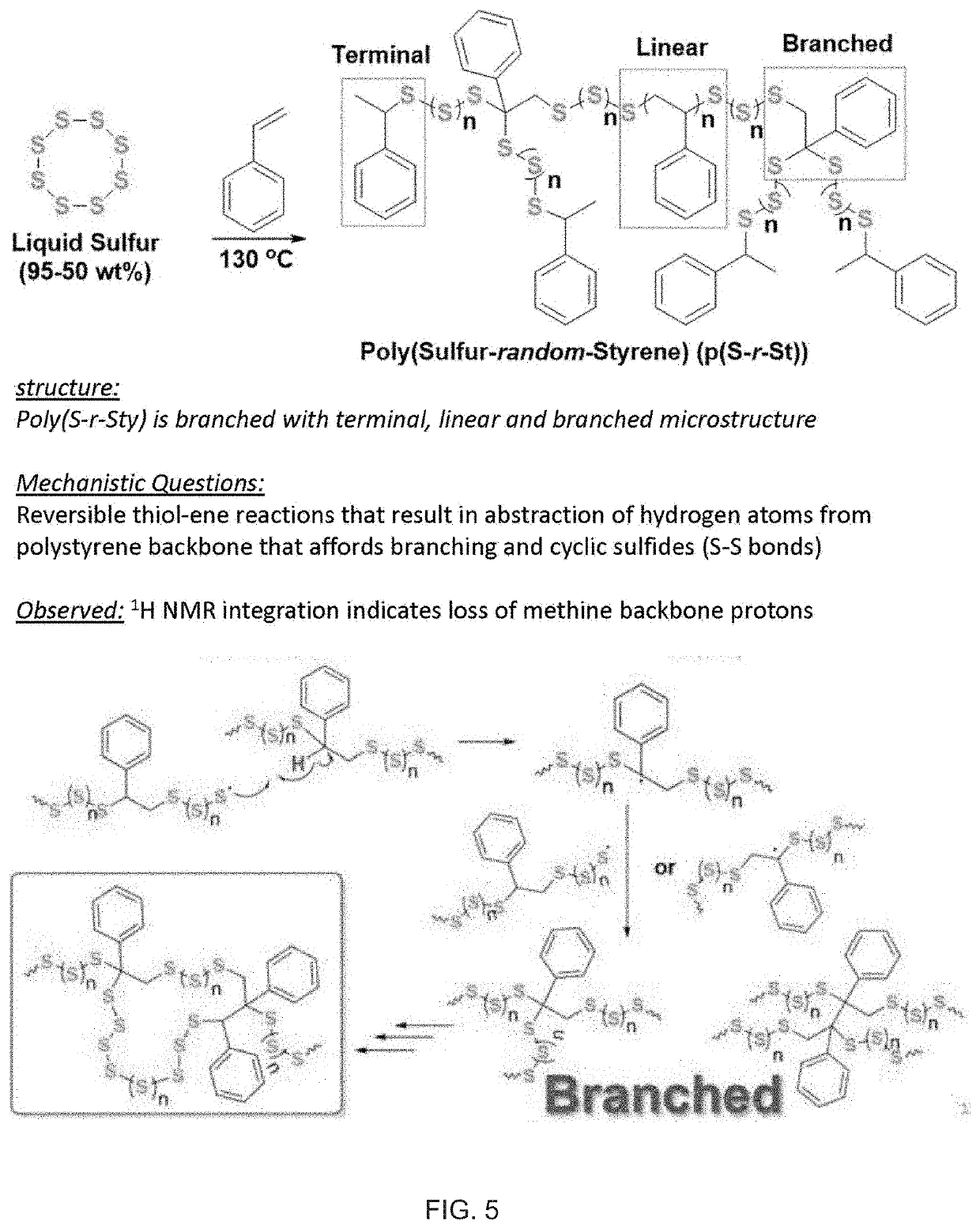Copolymerization of elemental sulfur to synthesize high sulfur content polymeric materials
a polymer material and elemental sulfur technology, applied in the field of polymer compositions and materials prepared from elemental sulfur, can solve the problems of difficult processing of elemental sulfur, limited number of synthetic methods available to utilize and modify elemental sulfur, and poor solid state mechanical properties of crystalline solids
- Summary
- Abstract
- Description
- Claims
- Application Information
AI Technical Summary
Benefits of technology
Problems solved by technology
Method used
Image
Examples
example 1
ing Procedure for Preparing an Exemplary Sulfur Polymer
[0108]To a 25 mL vial equipped with a magnetic stir bar was loaded with sulfur (700 mg, 2.73 mmol) and 4-vinylaniline (300 mg, 2.52 mmol). The mixture was heated in an oil bath and stirred at a temperature of about 130° C. to yield a red-orange liquid. The reaction was cooled to yield a poly(S-r-vinylaniline).
example 2
ing Procedure for Preparing an Exemplary Sulfur Polymer Grafted to a Terpolymer
[0109]Referring to FIGS. 7 and 8, about 50 mg of poly(S-r-vinylaniline) was added to a solvent of 5 ml tetrahydrofuran and 2 ml water, as shown in FIG. 8A. About 50 mg of aniline was added to the poly(S-r-vinylaniline) and solvent mixture, followed by 420 mg (2.5 eq) of ammonium persulfate ((NH4)2S2O8), as shown in FIG. 8B. The resulting polymer is a poly(S-r-vinylaniline)-graft-polyaniline, as shown in FIG. 8C.
[0110]In preferred embodiments, sulfur terpolymers and more complex copolymer materials, such as in the form of cross-linked polymers or non-crosslinked, intractable polymers, can be reprocessed by stimuli activation of dynamic S—S bonds in the polymer material. As used herein, the term “dynamic” is defined reversibly breaking of bonds. The introduction of S—S bonds into an intractable polymer material, or cross-linked polymer network, can allow for re-processing of the polymer material due to dyna...
example 3
of Methyl 4-(Allyloxy)Benzoate
[0142]To a 250 mL round bottom flask was added 8.83 g (58.04 mmol) of methyl-4-hydroxybenzoate, 9.81 g (70.98 mmol) of potassium carbonate, 0.78 g (2.95 mmol) of 18-crown-6, 6.2 mL (71.64 mmol) of allyl bromide and 50 mL of acetone and the reaction mixture was refluxed overnight. The reaction mixture was gravity filtered and acetone was removed by rot-vap. Then the crude product was dissolved in DCM and washed with 1M NaOH, 1M NaHSO4, brine and dried with Na2SO4. DCM was removed by rot-yap and 5.8 g of colorless liquid was collected (52% yield).
PUM
| Property | Measurement | Unit |
|---|---|---|
| wt % | aaaaa | aaaaa |
| wavelength range | aaaaa | aaaaa |
| wavelength range | aaaaa | aaaaa |
Abstract
Description
Claims
Application Information
 Login to View More
Login to View More - R&D Engineer
- R&D Manager
- IP Professional
- Industry Leading Data Capabilities
- Powerful AI technology
- Patent DNA Extraction
Browse by: Latest US Patents, China's latest patents, Technical Efficacy Thesaurus, Application Domain, Technology Topic, Popular Technical Reports.
© 2024 PatSnap. All rights reserved.Legal|Privacy policy|Modern Slavery Act Transparency Statement|Sitemap|About US| Contact US: help@patsnap.com










